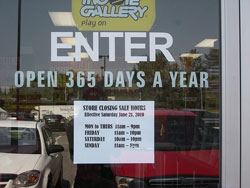
Source: Irony Defined, Andrew Kurjata, Flickr

Source: Irony, Taylor Pokrop, Flickr
Three important types of irony you will encounter in nonfiction include verbal irony, situational irony, and dramatic irony. All involve incongruity between what is expected and what actually occurs.
Verbal irony
The purposeful use of words in which the intended meaning is contrary to the literal meaning
“My, you’ve certainly made a mess of things!” would contain verbal irony if used to congratulate someone who’s just graduated summa cum laude or if said to a hostess who presents a spectacular dish prepared with obvious care and skill.
Situational irony
Characters or events that turn out to be different than what is expected
A man's stepping backward to avoid a wet dog and stepping into a swimming pool is an example of situational irony.
Dramatic irony
When an audience knows something that the characters do not, something that adds suspense or humor
“For instance, if you were in a restaurant and said out loud, ’I can’t wait to eat the veal marsala I ordered,‘ and there were people around who knew that the veal marsala was poisoned and that you would die as soon as you took a bite, your situation would be one of dramatic irony.” —Lemony Snicket, The Reptile Room
Now, click on the link to open a slideshow that presents two examples each of verbal, situational, and dramatic irony. As you watch the slideshow, consider the irony you see or hear in your everyday life.
On TV, comedian Stephen Colbert offers an example of verbal irony when he says, “My name is Stephen Colbert, but I actually play someone on television named Stephen Colbert, who looks like me, and who talks like me, but who says things with a straight face he doesn’t mean.” Colbert is the host of Comedy Central's The Colbert Report. We expect him to be himself, but he plays with our expectations.
Remember that irony involves expectations. The type of irony depends on whose expectations are challenged.
- If it’s unexpected by a character, it’s dramatic irony.
- If it’s unexpected by the audience, it’s situational irony.
- If someone says one thing but means another, it’s verbal irony.